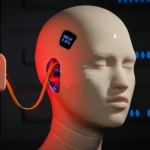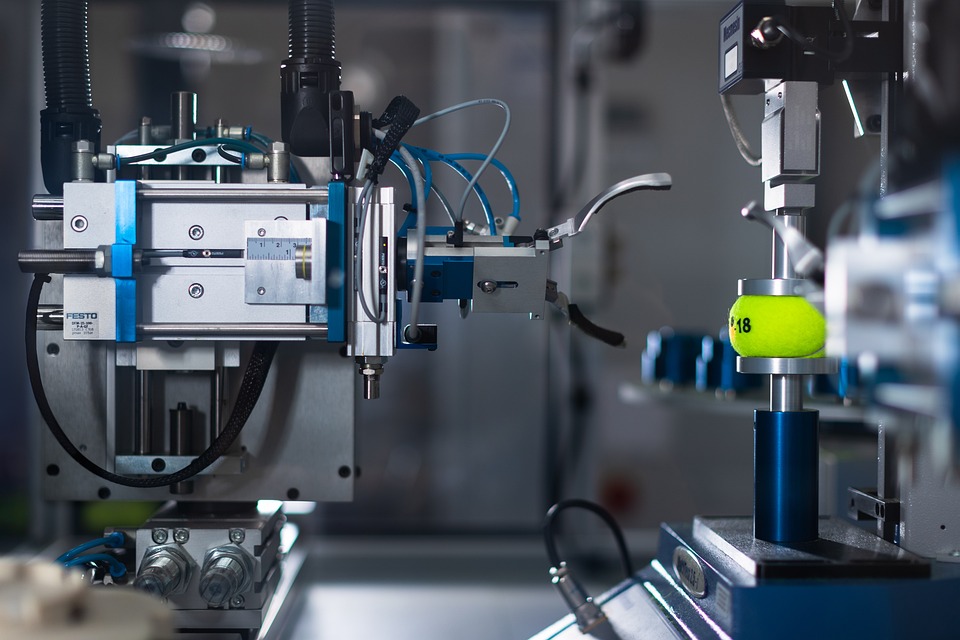From Science Fiction to Reality: Advancements in Robotics
The journey from science fiction to reality in the field of robotics has been nothing short of remarkable. What once existed only in the realms of imagination and speculative fiction has gradually become an integral part of our everyday lives. The advancements in robotics have been driven by rapid technological innovations, increased computational power, and growing applications in various industries. This article will explore the history, current state, and future of robotics, highlighting significant developments, key players, and ethical considerations.
The Evolution of Robotics: A Historical Perspective
Early Concepts and Developments
The concept of robots can be traced back to ancient times, where myths and tales spoke of automata—self-operating machines that mimicked human actions. For instance, in Greek mythology, Talos was a giant automaton made of bronze who protected the island of Crete by throwing stones at approaching ships[^1]. However, it wasn’t until the 20th century that the idea of robotics began to materialize in a tangible way.
In 1921, the term "robot" was first introduced by Czech playwright Karel Čapek in his play R.U.R. (Rossum’s Universal Robots), where robots were depicted as artificial beings created to serve humans^2. This sparked public interest and laid the groundwork for future explorations into robotics.
Mid-20th Century: The Birth of Industrial Robots
The development of robotics gained momentum in the 1950s and 1960s, particularly with the advent of industrial robots. George Devol and Joseph Engelberger created the first industrial robot, Unimate, which was implemented in General Motors’ production line in 1961[^3]. This marked a significant turning point, demonstrating the potential for robots to enhance productivity and efficiency in manufacturing processes.
By the 1970s and 1980s, the robotics industry experienced further growth as companies began to invest heavily in automation. This period saw the emergence of sophisticated robots capable of performing a variety of tasks, from welding and painting to assembly and packaging[^4]. The combination of mechanical engineering and computer science paved the way for advanced robotic systems.
The Rise of Personal and Service Robots
The late 20th century and early 21st century witnessed a shift in the focus of robotics from industrial applications to personal and service robots. Innovations in artificial intelligence (AI) and miniaturization of components enabled the development of robots meant for everyday use. The introduction of vacuum-cleaning robots like the Roomba in 2002[^5] marked a significant milestone in consumer robotics, demonstrating the potential to automate household chores.
The concept of humanoid robots took center stage with the introduction of robots like ASIMO (Advanced Step in Innovative Mobility) developed by Honda in 2000, which showcased advanced walking and running capabilities[^6]. These humanoid robots were aimed not only at performing tasks but also at interacting with humans, signaling a broader vision for robotics.
Current State of Robotics
Robotics in Industry
As of today, robotics continues to play a central role in various industries. Automation has become a critical factor in maintaining competitiveness among manufacturers. According to the International Federation of Robotics, there were an estimated 2.7 million industrial robots working in factories around the world by 2020, a figure that has only continued to rise[^7].
In sectors such as automotive manufacturing, electronics, and food processing, robots are increasingly used for tasks that require precision, speed, and safety. Collaborative robots, or cobots, have gained popularity, working alongside human operators to enhance productivity without compromising safety[^8]. These versatile machines can be easily programmed and reconfigured for various tasks, making them highly adaptable.
Healthcare Robotics
The healthcare sector has become one of the most promising areas for the application of robotics. Surgical robots, such as the da Vinci Surgical System, have revolutionized minimally invasive surgery, allowing surgeons to perform complex procedures with greater precision and control[^9]. Additionally, robotic-assisted rehabilitation devices have proven to be effective in aiding the recovery of patients after strokes or injuries.
Telepresence robots are also making strides, providing remote care through video conferencing and facilitating communication between patients and healthcare providers. This has become particularly significant during the COVID-19 pandemic, where social distancing measures have highlighted the need for remote healthcare solutions[^10].
Autonomous Vehicles
One of the most talked-about applications of robotics in recent years is the development of autonomous vehicles. Companies like Tesla, Waymo, and Uber have invested significantly in research and development to enhance self-driving technology. These vehicles utilize a combination of sensors, cameras, and artificial intelligence algorithms to navigate complex environments without human intervention[^11].
The potential benefits of autonomous vehicles are immense, including reduced traffic accidents, lower emissions, and improved mobility for people unable to drive. However, challenges remain, particularly concerning safety regulations and public acceptance[^12].
Drones and Aerial Robotics
Drones have emerged as another exciting area of robotics. Initially used primarily for military purposes, drones have found applications in various industries such as agriculture, logistics, and surveillance. Their ability to collect data from hard-to-reach areas has made them invaluable tools for farmers monitoring crop health, for instance[^13].
The rise of drone delivery services has also captured the public’s imagination, with companies like Amazon and Google experimenting with using drones for package delivery[^14]. As technology advances, the use of drones in urban settings is expected to increase, leading to innovative solutions for traffic congestion and delivery inefficiencies.
Innovations in Robotics Technology
Artificial Intelligence and Machine Learning
The integration of AI and machine learning into robotics has transformed the capabilities of robots. AI algorithms enable robots to learn from their environments and adapt their behaviors accordingly. This cognitive capability allows robots to perform tasks that were previously thought to be the exclusive domain of humans, such as visual recognition, decision-making, and even emotional interaction[^15].
Machine learning techniques, particularly deep learning, have made significant contributions to the development of robots capable of processing vast amounts of data. These systems can analyze images, understand natural language, and even predict outcomes based on historical data[^16].
Soft Robotics
Traditional robotics has primarily focused on rigid mechanisms and structures. However, soft robotics—a field that emphasizes flexible and deformable materials—has gained traction in recent years. Soft robots possess the ability to adapt to various shapes and environments, allowing them to navigate through constrained spaces and interact safely with humans[^17].
Applications of soft robotics include search-and-rescue operations, where robots can squeeze through debris, and medical devices that can manipulate tissues without causing damage. This paradigm shift in robotic design enhances the potential for robots to work in dynamic and unpredictable environments.
Advanced Sensor Technologies
The development of advanced sensors has been instrumental in enhancing the capabilities of robots. Sensors that detect depth, temperature, pressure, and motion allow robots to perceive their surroundings more accurately. Lidar (light detection and ranging) technology, for example, enables autonomous vehicles to create detailed 3D maps of their environments[^18].
Moreover, the integration of haptic sensors enables robots to ‘feel’ their surroundings, improving their ability to handle objects delicately. This is particularly useful in fields such as healthcare, where precision is critical.
Key Players in Robotics
The robotics landscape is teeming with innovative companies and research institutions. Some of the key players driving advancements in robotics include:
- Boston Dynamics: Known for its high-performance robots like Spot (the robotic dog) and Atlas (the humanoid robot), Boston Dynamics has set the standard for agility and mobility in robotics[^19].
- iRobot: A pioneer in consumer robotics, iRobot is best known for the Roomba, revolutionizing household cleaning[^20].
- ABB: A leader in industrial automation and robotics, ABB focuses on developing collaborative robots for various manufacturing processes[^21].
- KUKA: This German company is renowned for its industrial robots and automation solutions, especially in automotive manufacturing[^22].
- NVIDIA: While primarily a tech company, NVIDIA’s advancements in AI and GPU technology have been critical for the development of autonomous systems and robotic applications[^23].
Challenges and Ethical Considerations
As robots become increasingly integrated into society, several challenges and ethical considerations arise:
Job Displacement
One of the most pressing concerns is the potential for job displacement due to automation. While robots can increase efficiency and reduce costs, they also risk replacing human jobs, particularly in sectors like manufacturing and logistics. The World Economic Forum has projected that by 2025, automation may displace 85 million jobs while creating 97 million new roles[^24].
Mitigation strategies must be developed to facilitate workforce transitions, including reskilling and upskilling programs.
Privacy and Security
The use of robotics—especially in surveillance and data collection—raises significant privacy concerns. The deployment of drones and autonomous vehicles could lead to intrusive monitoring and data gathering, prompting the need for regulations that protect individual privacy rights[^25].
Moreover, security vulnerabilities associated with connected robots represent potential risks. Cyberattacks could exploit weaknesses in robotic systems, posing threats to critical infrastructure or personal safety[^26].
Ethical Dilemmas in AI
Robots equipped with AI pose ethical dilemmas, particularly in decision-making scenarios. For instance, in autonomous vehicles, determining how a vehicle should react in an unavoidable crash scenario presents ethical complexities likened to the trolley problem[^27]. The development of ethical guidelines and frameworks for AI is crucial to address these challenges.
The Future of Robotics
The future of robotics is poised for significant growth and innovation. As technology continues to advance, we can expect to see:
Enhanced Human-Robot Collaboration
Future robots will likely be designed for even closer collaboration with humans, enhancing efficiency in various sectors. Research into collaborative robots that can work seamlessly alongside human workers will continue, focusing on improving safety and communication[^28].
More Autonomous Systems
As autonomous technology matures, we can anticipate a wider acceptance of robots in everyday life. From self-driving cars to automated delivery services, the expectation is that robots will take on more responsibilities, making life easier and safer for individuals[^29].
Expansion into New Industries
Robotic technology is expected to penetrate new industries, including agriculture, construction, and even hospitality. For instance, robotics can provide solutions to labor shortages in agriculture through automated harvesting and monitoring systems[^30].
Increased Focus on Sustainability
Sustainable robotic solutions are gaining attention, driven by the need to address environmental concerns. Robots designed with energy-efficient technologies will play a critical role in reducing carbon footprints and promoting sustainable practices in various industries[^31].
Conclusion
The evolution of robotics from the realms of science fiction to a credible, transformative technology illustrates humanity’s creative and technological capabilities. Advancements in robotics are reshaping industries, enhancing efficiency, and introducing robots into our daily lives.
However, alongside these advancements come challenges and ethical considerations that must be addressed as we venture further into this robotic future. Stakeholders across industries, governments, and society must work together to navigate this landscape responsibly, ensuring that the benefits of robotics are harnessed for the betterment of all.
As we look ahead, the promise of robotics continues to invite imagination and innovation, blurring the lines between fiction and reality and redefining what it means to coexist with machines.
























Add Comment